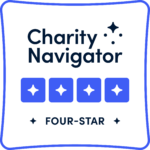On February 4th, Friends of Cancer Research (Friends) hosted a public meeting, “Advancing the Future of Diagnostics and Regulatory Innovations,” emphasizing the dual objectives of ensuring patient safety while fostering an environment conducive to innovation—a balance that is becoming increasingly critical in an era marked by rapid technological advancements.
Key Takeaways & Helpful Resources
Takeaway #1 – Strategic collaboration is vital for advancing AI-enabled pathology tools to enhance the accuracy and reproducibility of digital/computational methodologies. Central to the Session 1 discussion and Friends Digital PATH Project findings is the concept of strategic, multi-disciplinary collaboration to develop reference data sets. Publicly available reference data sets are necessary to evaluate analytical performance, model variability, and comparability across platforms, enabling more efficient regulatory decision-making and reproducible AI model validation.
- “Digital and Computational Pathology Tool Harmonization (PATH) Project” Presentation Slides
- Session 1 Discussion Document “Considerations for Developing Reference Data Sets for Digital Pathology Biomarkers”
Takeaway #2 – Regulatory flexibility and innovative approaches are critical for developing CDx targeting rare biomarkers. Given the limited availability of well-characterized clinical specimens for rare biomarker indications, discussions emphasized the necessity of alternative validation strategies, such as use of procured human specimens, contrived samples, and real-world data (RWD). The Friends’ white paper outlined how regulatory flexibility can support analytical validation in cases of limited sample availability, while ensuring robust clinical strategies for accuracy and patient benefit. Leveraging alternative methodologies can accelerate CDx development for small patient populations without compromising analytical rigor.
- Innovative Processes for Validating Diagnostic Tests for Rare Biomarkers or Indications
- Session 2 White Paper “Innovative Validation and Regulatory Processes for Companion Diagnostic Tests for Rare Biomarkers or Indications”
Takeaway #3 – AI governance and regulatory adaptation must evolve to address the iterative nature of AI-driven diagnostics while ensuring patient safety and clinical utility. As AI-enabled tools become increasingly integrated into precision medicine and healthcare, there is a great need for risk-based oversight strategies that account for continuous AI model updates and their integration into regulated healthcare environments. While AI-enabled tools already operate within FDA’s existing regulatory authorities, their rapid advancement blurs the traditional boundaries between drug and device regulation, necessitating harmonization of policies across medical product categories. Discussions highlighted the FDA’s recent guidance documents regarding AI in drug development and AI-enabled devices as an important step towards establishing clearer regulatory expectations while maintaining flexibility needed to support innovation.
Panelist Insights & Perspectives from the Meeting
Thank you to our incredible panelists. Here are some key takeaways from the panel discussions:
“The data that Friends has helped to produce with these different AI developers has shown that it ultimately comes down to the quality and representativeness of the data…Despite AI, we’re putting discrete diagnostic categories on a biological spectrum of a disease, and whenever you do this, there are certain areas where that spectrum cannot be reflected in discrete groups. Whether AI can solve that or not remains to be determined… AI will likely not replace a pathologist or diagnostic modality overall, but it will supplement it and I think that’s an incredible opportunity to have our experience plus a validated AI tool to ultimately render a more precise and more useful diagnostic decision.” — Joe Lennerz, BostonGene
“Looking into the future, [we have] the opportunity to leverage computational pathology as a tool for pathologists to be more accurate and more precise, and also to be able to identify unique patient populations, doing things that the human eye can’t do. Digital/computational pathology tools offer us the opportunity to be more sensitive when we think about HER2—when we think about HER2 ultra-low and low—but also as we approach a world where we’re going to have multiple approved ADCs, being able to use computational pathology to not only be more precise but more accurate. Identify novel patient populations that are going to respond to therapy. And really, the goal there is to identify the right patient for the right drug.” — Mark Gustavson, AstraZeneca
“We have to be really thoughtful about what’s best for patients as we’re doing these co-development programs. How do we get therapies that are safe and effective to patients as soon as practicable? How do we get well validated tests that we feel confident in, to patients as soon as possible? But how do we also take good care of their samples, and make sure that we are not putting them through unnecessary procedures where we don’t have to and whether there are other flexibilities that could be applied. Regulators and sponsors are working on this already, and are collaborating really well in these situations. I think what [the working group] was trying to do was set up a framework for how we all can think about this. How can we all get on the same page, and maybe collaborate even more efficiently on this, and make some of these things, maybe more of a standard practice where it’s appropriate and scientifically valid.” — Megan Doyle, Eli Lilly & Company
“There’s a lot of conversation about AI. What should we do about AI? What’s the right framework for AI? I think it’s important for us in this room to remind others that we’re already heavily regulated. We talked about the device framework. We talked about the use of AI in drug development, the healthcare data that we use to train these models and develop them is covered by HIPAA, so there’s already a set of rules that we’re operating under. I think FDA in issuing these really specific AI titled and directed guidances, is doing a good job of talking in FDA terms about these things, because we wouldn’t want to get swept up in some of these larger non-healthcare efforts and concerns about AI.” — Lauren Silvis, Tempus AI

